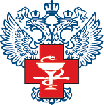 pirogov national medical surgical center
pirogov national medical surgical centernational center for researh and treatment of autoimmune diseases new jersey center for quality of life and health outcome research |
international symposium stem cell transplantation in multiple sclerosis: sharing the experience |
 |
 |
 |
 |
 |
 |
 |
 |
 |
 |
 |
 |
 |
 |
 |
| Theoretical and Practical Issues of Autologous versus Allogeneic Stem Cell Transplantation in Multiple Sclerosis |
|
International Symposium "Stem Cell Transplantation in Multiple Sclerosis", Key-Note Lectures Book, 2009, p. 38-49 A. Gratwohl Autologous and allogeneic hematopoietic stem cell transplantation (HSCT) have some common and some clearly distinct goals. Both permit the application of high dose chemo-radiotherapy up to the dose limiting extramedullary toxicity; allogeneic HSCT in addition can replace a diseased host hematopoiesis, including the immune system, by a healthy donor hemopoiesis. In the case of an autoimmune disease, the necessary goal to be achieved remains still a matter of debate. High dose immunoablation can reset ontogenesis of the immune system in animal models of experimental encephalomyelitis as well as in clinical HSCT formultiple sclerosis in man. In view of its significantly lower transplant related mortality, autologous HSCT should remain currently the preferred choice in clinical studies. Hematopoietic stem cell transplantation (HSCT) has become the treatment of choice for many patients with severe congenital or acquired malignant or non malignant disorders of the hematopoietic system and for chemo-, radio- or, immunosensitive malignancies. Experimental animal studies, incidental reports from patients with HSCT for another indication but concomitant autoimmune disorders and results from pilot studies have documented, that complete remissions can be obtained in situations of severe, treatment refractory autoimmune disorders. Animal data give clear indications, that some forms of congenital autoimmune diseases can only be cured by allogeneic HSCT. Other forms of animal autoimmune diseases, considered as acquired immune disorders can as clearly be cured by autologous HSCT alone. The situation is less clear in humans. Generally, autoimmune disorders in man are considered as induced by three independent components: a) inherited factors such as certain defined HLA-antigens, b) environmental factors such as smoking in rheumatoid arthritis and, c) chance phenomena. These considerations make it clear, that autologous HSCT cannot eradicate the congenital part; it might, however, be sufficient to control the inflammatory component which was induced by chance through environmental factors in an individual patient. As such, the situation in autoimmune disorders is not so much different from the case of clonally aberrant lymphoid reactions in patients with lymphoid malignancies. In some of these high dose chemotherapy is sufficient for control of the disease; in others, an allogeneic healthy novel immune system might be required. These concepts were already well known more than ten years ago, when the European Group for Blood and Marrow Transplantation EBMT and the European League Against Rheumatism EULAR did release a joint statement on the potential use of HSCT for treatment of patients with severe autoimmune disorders: the disease should be severe enough to justify the risk, the disease should not be so advanced not to permit clinical benefit for the patient, autologous HSCT should be the preferred choice and, standard techniques should be used. This view has not changed since. The experience from more than 200'000 HSCT worldwide gives some clear indications on potential benefits and risks of both, allogeneic and Autologous HSCT. Allogeneic HSCT is always linked with immunological complications, graft rejection (Hostversus-Graft reaction; HvG) and the reverse, rejection of the recipient by the immunocompetent transplanted immune system (Graft-versus-Host disease; GvHD). Furthermore, time to recovery of complete immunocompetence is considerably longer in allogeneic HSCT than in autologous HSCT. The reasons for this delayed immune recovery are probably manyfold; donor-host interaction is required for competent immune response, immunosuppression is needed to suppress both, HvG reaction and GvHD. This combined and prolonged immunoincompetence is associated with a prolonged higher risk for bacterial, fungal, viral and parasitic infections in allogeneic, compared to autologous HSCT. For these reasons, allogeneic HSCT is associated with higher transplant related mortality (TRM) in the early as well as in the late post transplantation period. As a benefit, allogeneic HSCT is devoid of malignant (in the case of HSCT for a malignant disease) or autoreactive (in the case of autoimmune disease) stem, precursor or, effector cells. The risk of relapse is significantly higher after autologous HSCT in all disease categories examined. The net balance of benefit and detrimental effects between autologous and allogeneic HSCT is not easy to assess. It can be very clear in some congenital or high risk malignancies.) In others, years may elapse until the beneficial effects of reduced relapse become higher than the early years of life lost after allogeneic HSCT. Overall, the best results are always obtained with syngeneic HSCT; if there is a syngeneic donor, HSCT is the preferred choice. This, despite the fact, that syngeneic twins hold an inherent risk to develop the same disease as their twin. This disease concordance for twins has clearly been shown in autoimmune disorders and in hematological malignancies. The discordant effects of major histocompatibility antigens holds as well true for minor histocompatibility antigens (mHAg). This has been shown for the H-Y encoded mHAg's. Male stem cells are more likely to be rejected by female recipients; female donors are more likely to induce more GvHD in male recipients. The detrimental effects of increased TRM in the female donor-male recipient situation never outweigh the benefit of reduced relapse rate. Hence, it is unlikely that beneficial allogeneic effects, whatever their mechanism, will outweigh the negative impact. The situation in severe autoimmune disorders is even more complicated than after allogeneic HSCT for a malignancy. Some clinical features of chronic GvHD are indistinguishable from some autoimmune disorders. Specifically, chronic GvHD was first described based on the resemblance of it with Sjgren's syndrome, systemic sclerosis or primary biliary cirrhosis. Last but not least, late altered immunity has recently been described as a new late effect after allogeneic HSCT. This syndrome includes some clinical and laboratory aspects of autoimmunity. The introduction of reduced intensity conditioning transplants (RIC HSCT) has revolutionized clinical HSCT, expanded HSCT to patients with comorbidities and has abolished age limits. It has also created big expectations that RIC HSCT might favor clinical applicability of allogeneic HSCT for patients with severe autoimmune disorders. Indeed, RIC HSCT was suggested by a joint statement on allogeneic HSCT by an international panel. Experience over the last ten years with RIC HSCT for hematological malignancies do not support such expectations. Explanations are simple. Main reasons of death after an allogeneic HSCT are relapse, immunological complications (HvG and GvHD), infectious complications and toxicity of the conditioning regimen. The contribution to toxicity of the conditioning regimen is therefore just about one quarter of all toxicity. Earlier experience has clearly shown that increased conditioning intensity can reduce relapse risk, but only at the expense of higher TRM. The reverse is now the case. Reduced conditioning can reduce deaths from toxicity of the conditioning; it cannot reduce the risk of immunological complications. It does so at the expense of an increased relapse rate. The net benefit is in favor of the RIC HSCT early on, eg at day 100. It is lost with five year follow up. RIC HSCT does not alter the inherent risk of the key pre transplant patient factors as established by the EBMT risk score: age of the patient, disease stage, time interval from diagnosis to transplant, donor type and donor recipient gender combination. In summary, all current available information suggest, that autologous HSCT should remain the standard approach to clinical HSCT for patients with severe autoimmune disorders including multiple sсlerosis. Syngeneic twin donors, if there are, are preferred. Allogeneic HSCT can be discussed in rare patients with specific features that they are likely to benefit more from an allogeneic HSCT, e.g. young patients with no comorbidities and hematological autoimmune cytopenias. |
|
© KMart |
(last update) 28/10/2009 |